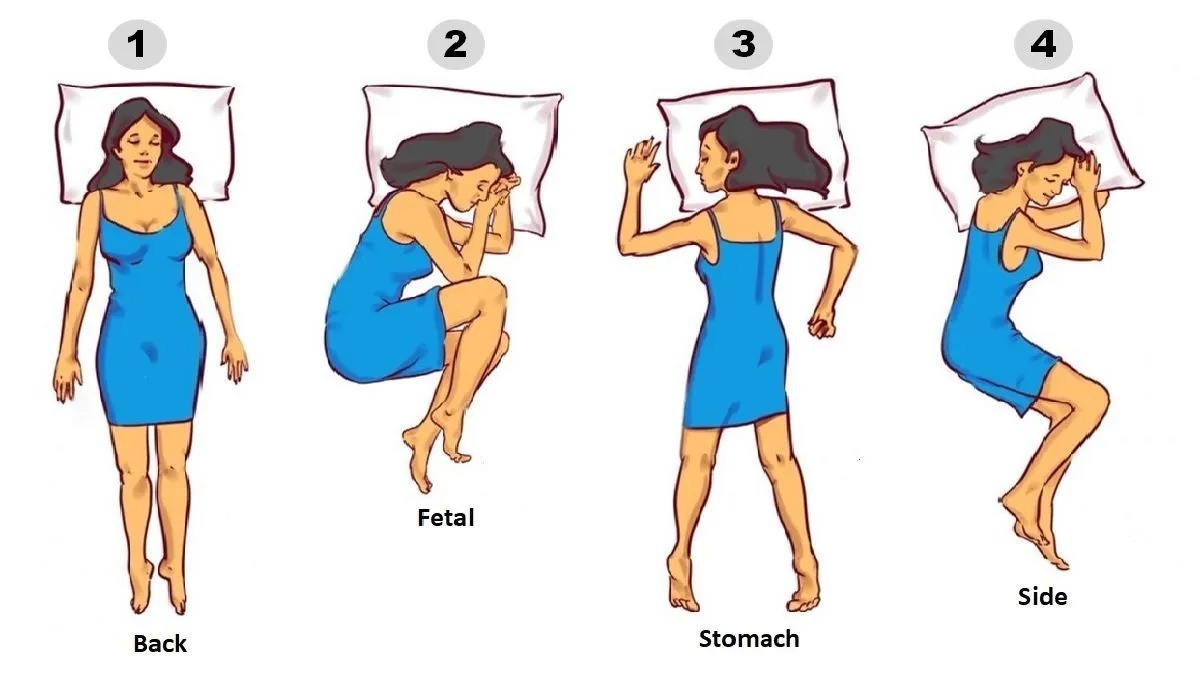“This article is for general informational purposes only and does not constitute medical advice”
Getting enough sleep is essential, but how you position your body during sleep can also significantly affect your health. According to the Sleep Foundation and other medical institutions, your sleeping posture influences everything from spinal alignment to digestion, circulation, and even breathing.
Many people are unaware that poor sleep posture may contribute to chronic pain, reduced sleep quality, and even longer-term musculoskeletal issues. Fortunately, with simple changes, you can improve your posture and promote more restful, restorative sleep.
Buy vitamins and supplements
Common Sleeping Positions and Their Impact
1. Sleeping on Your Stomach
While some find sleeping on their stomach comfortable, experts generally caution against this position. The Cleveland Clinic explains that stomach sleeping can place undue pressure on the spine and neck, as the head must be turned to one side to breathe.
This unnatural position can lead to neck stiffness, back pain, and muscle strain. Additionally, it may cause discomfort in the lower back due to the misalignment of the spine. If you’re a habitual stomach sleeper, consider transitioning to a side or back position gradually with pillow support.

2. Sleeping with Arms Above the Head or Under the Pillow
Sleeping with your arms raised or tucked under your head may feel cozy, but it can compress nerves and blood vessels, leading to numbness, tingling, or pain in the shoulders and arms.
According to the Mayo Clinic, this position may contribute to shoulder impingement syndrome or conditions like brachial plexus compression. If you often wake up with “pins and needles” in your arms, your posture may be to blame.

3. Extreme Fetal Position
Sleeping in a curled-up fetal position—especially with knees pulled tightly to the chest—can restrict diaphragmatic breathing and create tension in the neck and spine.
While Harvard Health notes that side sleeping is generally beneficial, particularly for people with sleep apnea or acid reflux, over-curling the body can hinder airflow and reduce comfort. Instead, aim for a moderately bent fetal position to maintain a neutral spine and allow better breathing.
Buy vitamins and supplements
The Best Sleeping Position: Left Side Sleeping
Experts widely recommend side sleeping, especially on the left side, due to its multiple health benefits. The Sleep Foundation and Johns Hopkins Medicine highlight the following advantages:
- Improved Digestion: The left side allows gravity to aid the movement of waste through the digestive tract.
- Reduced Acid Reflux: Studies show that left-side sleeping can reduce symptoms of gastroesophageal reflux disease (GERD).
- Better Circulation: This position may enhance blood flow, especially for pregnant individuals or people with heart conditions.
- Spinal Health: Side sleeping with a pillow between the knees helps maintain spinal alignment and reduces pressure on the hips and lower back.
To achieve optimal alignment, ensure your neck and spine remain in a neutral position, supported by a properly shaped pillow.

Back Sleeping: Mixed Benefits
Sleeping on your back is also considered healthy for spinal alignment, as it allows the body to rest in a neutral posture without unnatural curvature. However, it may exacerbate snoring or sleep apnea in some individuals.
The American Academy of Sleep Medicine advises people with obstructive sleep apnea (OSA) to avoid back sleeping, as gravity can cause the tongue and soft palate to collapse into the airway. In such cases, side sleeping is typically recommended.

Tips for Improving Sleep Posture
Improving your sleeping position doesn’t require drastic changes. Here are science-backed tips from the National Sleep Foundation and sleep health experts:
Buy vitamins and supplements
- Choose the Right Pillow
Use a pillow that supports the natural curve of your neck. Side sleepers benefit from a firmer, thicker pillow, while back sleepers need a thinner one to prevent neck strain. - Support Your Knees
If you sleep on your side, place a pillow between your knees to align your hips and reduce pressure on your lower back. Back sleepers can place a small pillow under the knees to maintain lumbar support. - Adjust Your Mattress
A medium-firm mattress typically provides the best support for most sleeping positions. Check with your healthcare provider if chronic pain persists. - Create a Sleep-Friendly Environment
Maintain a cool, dark, and quiet bedroom. Reduce screen time at least 30–60 minutes before bed to avoid blue light disrupting your circadian rhythm. - Gradually Retrain Your Sleep Posture
If you’re trying to shift from a less ideal position, use strategically placed pillows to encourage side sleeping or reduce stomach pressure.

Quality Over Quantity
As experts emphasize, good sleep isn’t just about duration—it’s also about sleep quality and physical comfort. Consistently sleeping in a posture that supports the body’s natural alignment can reduce the risk of long-term issues such as chronic neck pain, sciatica, or shoulder discomfort.
By making small, conscious changes to your sleeping posture, you can wake up feeling more refreshed, avoid unnecessary strain, and improve your overall well-being.

Conclusion: Position Yourself for Better Sleep
Your sleeping position has a measurable impact on your health. Whether you’re experiencing frequent neck stiffness, tossing and turning at night, or waking up fatigued, your posture may be a contributing factor.
Buy vitamins and supplements
Health professionals agree that side sleeping—particularly on the left—offers the most benefits for digestion, circulation, and spinal alignment. Avoiding problematic positions, such as stomach sleeping or overly curled fetal posture, can go a long way in improving how well you sleep—and how well you feel during the day.
Investing in the right pillow, mattress, and sleep environment is a simple yet powerful way to support your health. Sleep smarter by sleeping in a position that supports your body’s natural structure and needs.
Sources:
- Sleep Foundation (sleepfoundation.org)
- Cleveland Clinic (clevelandclinic.org)
- Harvard Health Publishing (health.harvard.edu)
- Mayo Clinic (mayoclinic.org)
- National Sleep Foundation (thensf.org)
- American Academy of Sleep Medicine (aasm.org)
- Johns Hopkins Medicine (hopkinsmedicine.org)
